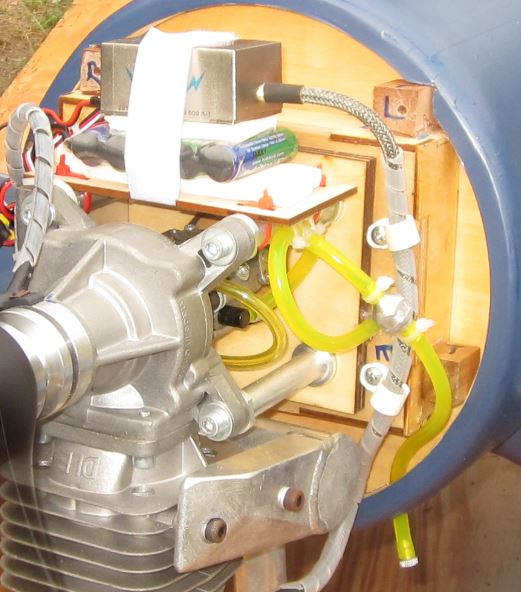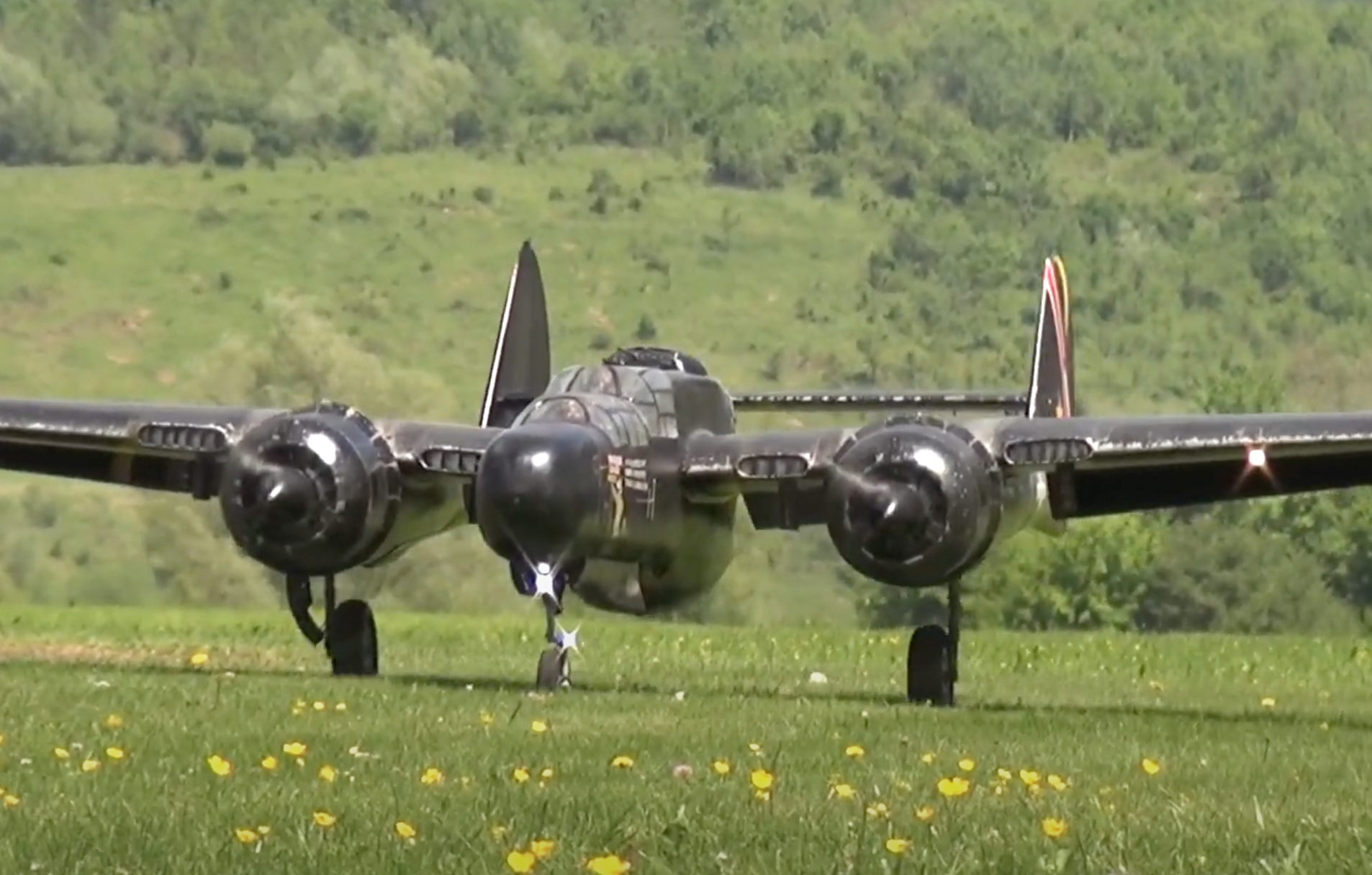On all of my nitro and gasoline-powered airplanes, I use zip ties to secure my fuel lines going from the fuel tank to both the carburetor and the muffler. When routing lines within your airplane, make sure that they can move freely and are not bent in any odd fashion. After all, you need to make sure that fuel can move slightly from the tank to the carburetor, and also, from the vent line in the tank to the vent on the exterior of the model. However, make sure that these lines do not come into contact with any hot item like the engine’s muffler. Rather, fasten a line if you think it may touch the muffler.
Also, if you are flying a gasoline-powered airplane, make sure that you change all fuel lines yearly. In the past, I have put airplanes aside for a year or so, but I always perform a pre-flight check on my airframes before taking them to the flying field.
 In this routine check, I go over the fuel lines. On occasion, I have found that gasoline lines harden, and in fact, the clunk line can harden. I have heard horror stories where people have experienced an engine failure while the airplane was inverted and they lost that particular model. The cause– a hardened clunk line that did not fall freely within the tank. As a result, fuel could not reach the clunk and the airplane’s engine quit at a rather unexpected time. Simply said, make sure this doesn’t happen to you!
In this routine check, I go over the fuel lines. On occasion, I have found that gasoline lines harden, and in fact, the clunk line can harden. I have heard horror stories where people have experienced an engine failure while the airplane was inverted and they lost that particular model. The cause– a hardened clunk line that did not fall freely within the tank. As a result, fuel could not reach the clunk and the airplane’s engine quit at a rather unexpected time. Simply said, make sure this doesn’t happen to you!
























Perfectly right article. The gas pilots are the prisoners of what they learned from glow fuel. They use wrongly the Tygon in the gas tank. It is good as long is not used in the tank. Sullivan Proflex Proprietary fluoroelastomer fuel line will never harden. It is a bit more expensive, but is worth. And with the clunk in the tank, use part brass tube, part this hose, in order to avoid kinking. Nice to have for glow engines(smaller engines size than gassers) the two ways Dubro Kwik-Fill valve. But not for gassers from 35cc up; by strong suction in the carburetor the valve opens a bit, then allows some air in the gas line, or the two “O” rings do not close well, soon after valve installation (since are not very resistant), then from time to time when you need high speed and torque, the the most perfectly tuned-up motor, is beginning to cough. The safest is the fuel dot, and totally separated 3 ways. If you use a “T” plastic connector on the feeding line, big chances to flood the engine while pumping gas in, then difficult start. The setting for glow fuel system is not good for gas system.
I wish success to all my brothers-in-hobby.
I disagree with using the zip ties, as those do not provide a circular pressure on the hose. In the area of the lock retainer (sorry if wrong wording as I am not a native speaker) the hose is typically squished and is the first place where a leakage happens. As smaller the hose diameter, as worse it is.
Better to use hose clips as those are commonly used to secure vacuum hoses in cars.
Kind regards from Graz/Austria
Volker
I prefer to use Viton tubing and do not use cable ties as that could cause air to seep in as the cable ties can cause a pinch. I prefer to use a small piece of tubing and stretch it over to double it up.
Dear Volker, firstly, your English is perfect. Secondly, you are perfectly right with everything. Those clips must be compressed a bit before use, according to the hose diameter, and according to our hobbyists common sense, to a diameter about 0.85 of the hose diameter.
I definitely agree with Volker the wire hose clips apply even pressure to the fuel lines. zip ties are good for a quick field fix as ive actually had one fail on me, allowing air in at high speeds but not at idle. it was one of those problems you learn with time